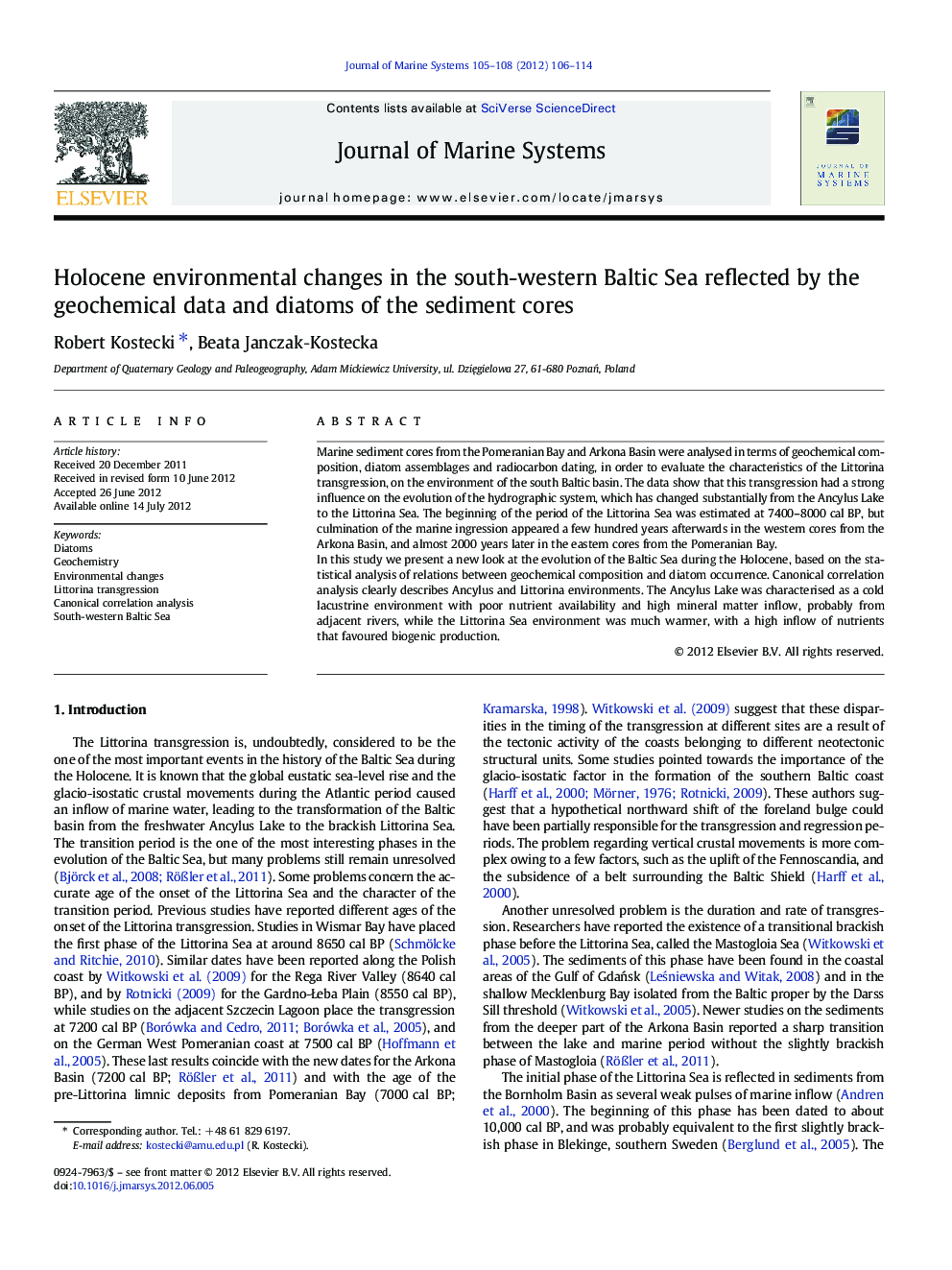| Article ID | Journal | Published Year | Pages | File Type |
|---|---|---|---|---|
| 6387226 | Journal of Marine Systems | 2012 | 9 Pages |
Marine sediment cores from the Pomeranian Bay and Arkona Basin were analysed in terms of geochemical composition, diatom assemblages and radiocarbon dating, in order to evaluate the characteristics of the Littorina transgression, on the environment of the south Baltic basin. The data show that this transgression had a strong influence on the evolution of the hydrographic system, which has changed substantially from the Ancylus Lake to the Littorina Sea. The beginning of the period of the Littorina Sea was estimated at 7400-8000Â cal BP, but culmination of the marine ingression appeared a few hundred years afterwards in the western cores from the Arkona Basin, and almost 2000Â years later in the eastern cores from the Pomeranian Bay.In this study we present a new look at the evolution of the Baltic Sea during the Holocene, based on the statistical analysis of relations between geochemical composition and diatom occurrence. Canonical correlation analysis clearly describes Ancylus and Littorina environments. The Ancylus Lake was characterised as a cold lacustrine environment with poor nutrient availability and high mineral matter inflow, probably from adjacent rivers, while the Littorina Sea environment was much warmer, with a high inflow of nutrients that favoured biogenic production.
⺠The beginning of Littorina Sea in the south-western Baltic Sea was estimated at 8000 cal BP. ⺠We discovered a strong relation between diversity of diatom species and geochemistry of the Holocene Baltic Sea sediments. ⺠The Ancylus Lake was a cold lacustrine environment with poor nutrient availability and high mineral matter inflow. ⺠The Littorina Sea was a much warmer marine environment with a high inflow of nutrients.
